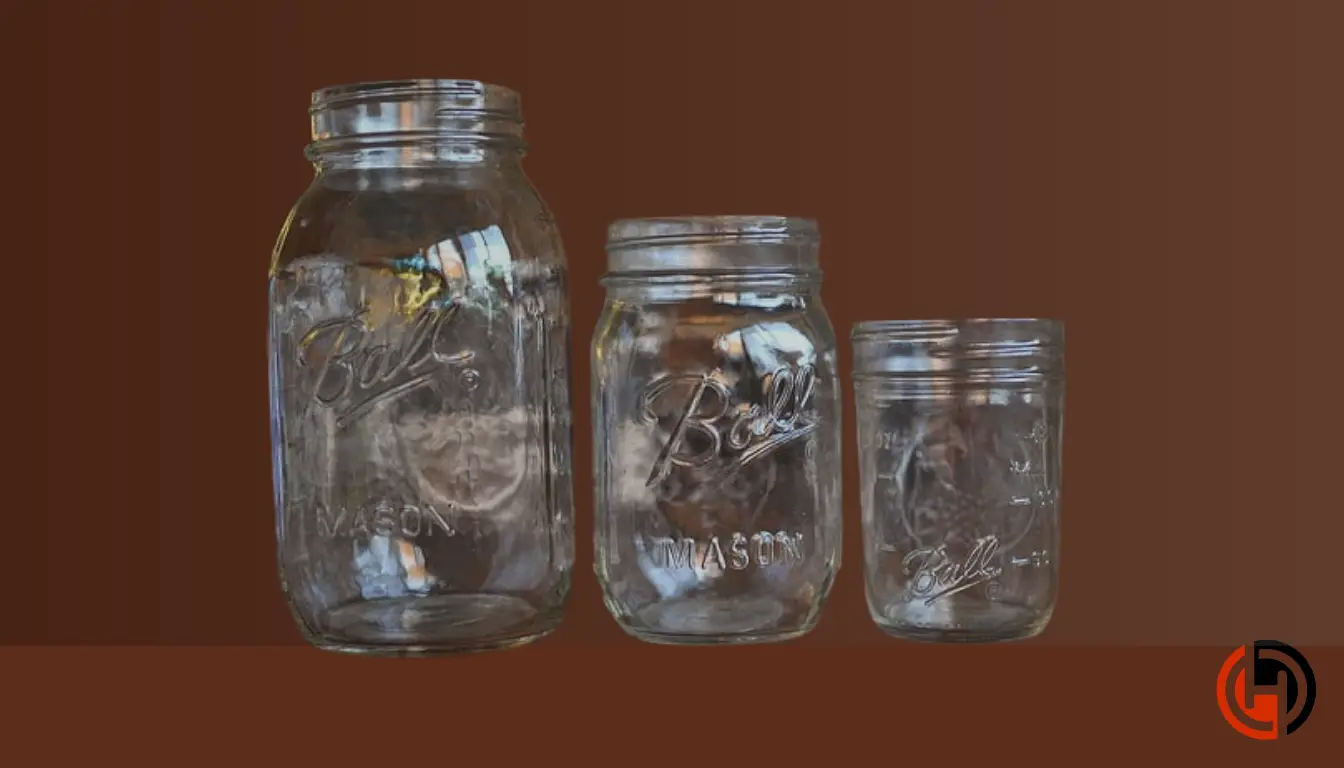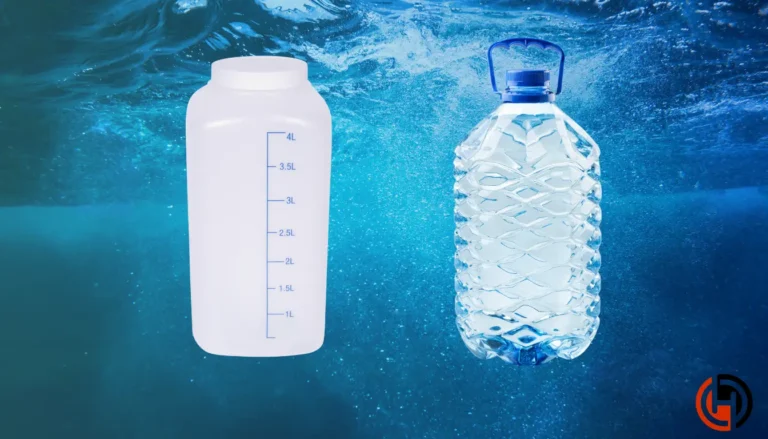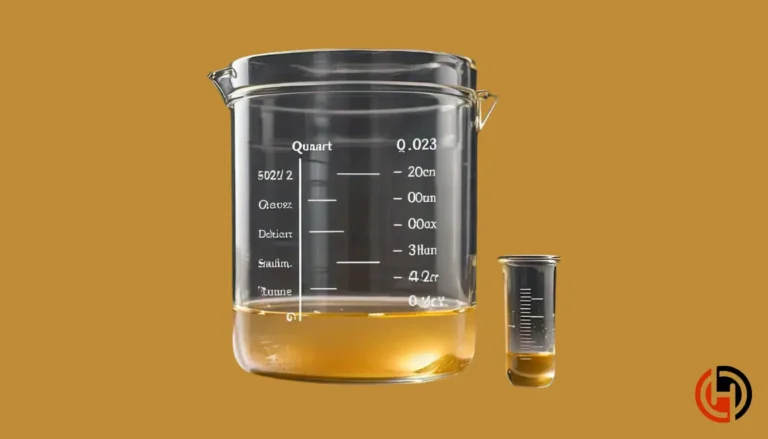How Many Ounces in a Pint? The Complete Guide to Converting Pints to Ounces
Hey pint lovers! We know that figuring out how many ounces in a pint can be confusing, especially when you’re trying to follow a recipe or serve drinks. But don’t worry we’re here to help! In this guide, we’ll show you exactly how many ounces are in a pint and explain the differences between US and UK measurements. You’ll also learn about specific conversions for things like berries and ice cream. So, stick around and read on to make measuring easy and fun!
How Many Ounces Are In A Pint
Having a quick reference for converting pints to ounces is handy for various cooking and measuring needs. Below is a comprehensive table that provides conversions for both US and UK pints, making it easy to find the equivalent ounces.
| Measurement | Pints | Ounces (US) |
|---|---|---|
| 1 Pint | 1 | 16 fl oz |
| 1/2 Pint | 0.5 | 8 fl oz |
| 1/4 Pint | 0.25 | 4 fl oz |
| 1 Pint of Sour Cream | 1 | 16 fl oz |
| 1 Pint of Berries | 1 | 16 fl oz |
What Is an Ounce?
An ounce is a way to measure both liquids and solids. There are two main types of ounces: fluid ounces and dry ounces.
Fluid Ounces (fl oz) are used for measuring liquids like water, milk, or juice. When someone talks about ounces in cooking, they usually mean fluid ounces. One fluid ounce is about 29.57 milliliters. So, if you’re measuring liquids, fluid ounces are what you need!
Dry Ounces are used for measuring solid foods like sugar, flour, or vegetables. One dry ounce is about 28.35 grams. Dry ingredients can be packed tightly or be fluffy, so it’s important to use dry ounces for these items.
You might be curious how many fluid ounces are in a pint. In the United States, there are 16 fluid ounces in a pint. This means when you pour a pint of your favorite drink, it holds 16 fluid ounces! If you’re asking about a pint of alcohol, like beer, the answer is still the same—you get 16 fluid ounces.
What Is a Pint?
A pint is a unit of measurement for liquids. It is used in both the United States and the United Kingdom, but the size of a pint can be different in each place.
In the United States, a pint is equal to 16 fluid ounces. This is the measurement most people use when they are serving drinks, like beer or soda, or when they are following recipes.
In the United Kingdom, a pint is larger, measuring 20 fluid ounces. This means that if you order a pint in the UK, you get more drink than you would in the US. This difference can be surprising for travelers, so it’s good to know!
When we talk about measurements, we often mention the Imperial and Metric systems. The Imperial system is used in the UK and includes pints, quarts, and gallons. The Metric system, used in most other countries, measures things in liters and milliliters.
This information is helpful for understanding how pints work in different places!
How Many Ounces Are in a Pint?
So, how many ounces are in a pint? In the United States, a pint contains 16 fluid ounces. If you’re measuring liquids like water, juice, or beer, you can always count on 16 fluid ounces for a pint.
In the United Kingdom, a pint is a bit larger and contains 20 fluid ounces. This means when you pour a pint of your favorite drink, it holds 16 fluid ounces! If you want to explore more about measurements, you can find out how ounces relate to pounds!
It’s important to remember that fluid ounces and dry ounces are different. Fluid ounces (fl oz) are used for measuring liquids, while dry ounces measure solids. For example, if you’re weighing flour or sugar, you would use dry ounces instead of fluid ounces. This distinction helps you get the right amount in your recipes.
So, to sum it up:
- US pint = 16 fluid ounces
- UK pint = 20 fluid ounces
How Many Ounces in a Half Pint?
If you’re wondering how many ounces are in a half pint, the answer is quite simple!
In the United States, a half pint equals 8 fluid ounces. This is half of the full pint measurement of 16 fluid ounces. So, if you’re using a recipe that calls for a half pint of milk or any other liquid, you’ll need to measure out 8 fluid ounces.
In the United Kingdom, a half pint contains 10 fluid ounces. Since a full pint in the UK is larger, half of that measurement results in more ounces compared to the US.
To sum it up:
- US half pint = 8 fluid ounces
- UK half pint = 10 fluid ounces
Wet vs. Dry Pint.
When it comes to measuring, understanding the difference between a wet pint and a dry pint is essential, especially in cooking and baking.
How Many Ounces in a Dry Pint?
A wet pint is used for measuring liquids. In the United States, a wet pint equals 16 fluid ounces. This measurement is perfect for liquids like water, milk, or juice. When a recipe asks for a pint of a liquid ingredient, you’ll be using a wet pint.
How Many Ounces in a Wet Pint?
On the other hand, a dry pint is used for measuring solid ingredients. In the US, a dry pint is also 16 ounces, but it measures weight, not fluid volume. However, since dry ingredients can be packed differently, a dry pint often measures items like berries or chopped vegetables.
For example, if you’re measuring flour or sugar, you might see recipes that specify a dry pint, which would also be 16 ounces, but the texture and packing of the ingredient can affect how much actually fits in that measurement.
Food-Specific Measurements
How Many Ounces in a Pint of Blueberries?
If you’re curious about how many ounces are in a pint of blueberries, the answer is about 12 ounces.
This measurement is helpful, especially when you’re baking or blending up a tasty smoothie. Blueberries are often sold in pint containers at the grocery store, so when you pick one up, you’re looking at a container that holds roughly 12 fluid ounces of these juicy fruits.
Knowing this is important because if a recipe calls for a pint of blueberries, understanding that it equals about 12 ounces can help you measure just the right amount. Whether you’re making blueberry muffins, pancakes, or a refreshing fruit salad, having the correct measurement ensures your dish turns out just right.
So, the next time you grab a pint of blueberries, remember you’re getting around 12 ounces of fruity goodness!
How Many Ounces in a Pint of Sour Cream?
A pint of sour cream contains 16 fluid ounces. This is an important measurement to know when you’re cooking or baking.
Sour cream usually comes in pint containers, so when you buy one, you can be sure it has 16 ounces of this creamy ingredient.
Knowing this is helpful because if a recipe asks for a pint of sour cream, you’ll know you need to use 16 fluid ounces. This is great for making dips, dressings, or adding a rich flavor to your baked goods.
How Many Ounces in a Pint of Berries?
A pint of berries usually holds about 12 to 16 ounces, depending on the type of berry and how they are packed.
For strawberries, a pint typically contains around 12 ounces. Strawberries can vary in size, but you can expect a pint to be filled with delicious, fresh berries ready for your favorite recipes.
A pint of raspberries also usually contains about 12 ounces. Raspberries are soft and delicate, so they may not pack as tightly as some other berries, but a pint will still give you a good amount to work with.
How Many Ounces in a Pint of Ice Cream?
A pint of ice cream contains 16 fluid ounces. Ice cream is commonly sold in pint containers, making it easy to grab your favorite flavor from the freezer.
When you see a pint of ice cream, you can be sure it has 16 ounces of that creamy, delicious treat. This measurement is useful for knowing how much you’re serving, whether you’re enjoying it in a bowl or using it to make a sundae.
If a recipe calls for a pint of ice cream, you’ll know you need to measure out 16 fluid ounces. This helps you get the right amount for making milkshakes, ice cream cakes, or just enjoying a scoop on a hot day.
How Many Ounces in a Pint of Tomatoes?
A pint of tomatoes typically contains about 12 to 16 ounces. This can vary depending on the type of tomatoes and how they are packed.
For regular tomatoes, a pint usually weighs around 16 ounces. When you buy a pint of whole tomatoes, you can expect it to be filled with fresh, juicy tomatoes perfect for salads, sauces, or stews.
When it comes to cherry tomatoes, a pint generally holds about 12 ounces. Cherry tomatoes are smaller and lighter, which is why a pint may weigh a bit less. They are great for snacking, adding to salads, or roasting for a tasty side dish.
Knowing these measurements can help you when you’re cooking or planning meals!
How Many Ounces in a Pint Glass?
A pint glass typically holds 16 fluid ounces. This standard measurement is commonly used for serving drinks like beer, cocktails, or soda. When you order a pint at a bar or restaurant, you can expect to receive a glass filled with 16 ounces of your favorite beverage.
For beer, a pint glass is the perfect size for enjoying your drink. A pint of beer also contains 16 ounces, making it easy to know how much you’re getting when you order one. Whether you’re enjoying a lager, ale, or stout, a pint glass is a popular choice for serving.
The same applies to other types of drinks, like cocktails and liquors. A pint glass typically holds 16 ounces for these beverages as well. This standard size makes it easy to measure out drinks and helps ensure consistent servings across different venues.
How Many Ounces in a Pint Jar?
A pint jar, also known as a pint mason jar, holds 16 fluid ounces. This measurement makes it a handy container for various kitchen tasks.
Pint jars are often used for canning, storing food, or preparing meals in advance. They are great for preserving fruits, vegetables, sauces, and jams. The 16-ounce capacity is perfect for small batches, making it easy to keep your homemade goodies fresh.
Pint jars can also be used for everyday storage. You can fill them with snacks, spices, or even use them for organizing small items around the kitchen. When you see a pint mason jar, you can confidently know it contains 16 ounces of whatever you decide to store inside.
International Pint Conversions: US vs. UK
When comparing pints in the United States and the United Kingdom, it’s important to note the key differences in their measurements.
In the US, a pint is equal to 16 fluid ounces. This is the standard measurement used for liquids like beer, milk, and other beverages.
In contrast, a British pint is larger, measuring 20 fluid ounces. This means that when you order a pint in the UK, you get more liquid than in the US. This difference can be surprising for travelers, so it’s good to be aware of it.
These variations come from the Imperial system used in the UK and the US customary system. The Imperial system measures pints, quarts, and gallons differently than the US system, which is why you’ll find that a pint in the UK holds more than in the US.
Here’s a quick comparison table to illustrate the differences:
| Measurement Type | US Pint | UK Pint |
|---|---|---|
| Fluid Ounces | 16 fl oz | 20 fl oz |
| Volume | 1 Pint | 1 Pint |
To understand the relationship between different units of measurement, it’s essential to know how pints relate to quarts. Discover how quarts compare to pints to enhance your knowledge of liquid conversions.
How Many Ounces in a Pint of Water?
Understanding liquid measurements is essential, especially for water. A pint is a common unit used in cooking and beverages. So, how many ounces are in a pint of water?
In the United States, a pint is defined as 16 fluid ounces. This means that for water, a pint will always equal 16 ounces.
Why This Matters
Knowing how many ounces are in a pint of water is beneficial for several everyday tasks:
- Cooking and Baking: Many recipes specify measurements in pints, particularly for liquids. Being aware of this conversion allows for accurate recipe following without second-guessing.
- Hydration Goals: If tracking water intake, recognizing that a pint equals 16 ounces helps measure daily consumption effectively.
- Understanding Labels: Many beverage containers use pints as a measurement. Familiarity with this conversion aids in comprehending the volume of liquid consumed.
Quick Reference
1 pint of water = 16 ounces
How Many Ounces in a Cup, Pint, Quart, Gallon?
| Measurement | Ounces |
|---|---|
| 1 Cup | 8 fl oz |
| 1 Pint | 16 fl oz |
| 1 Quart | 32 fl oz |
| 1 Gallon | 128 fl oz |
Importance of Knowing These Conversions
Understanding these conversions can significantly enhance your cooking and meal preparation by ensuring accuracy in recipes, aiding in portion control, and simplifying grocery shopping. With this quick reference, you’ll have a handy guide for measuring liquids effectively!
How to Accurately Measure Ounces and Pints
Accurate measurement is key in cooking, baking, and beverage preparation. Knowing how to measure ounces and pints correctly can make a significant difference in the quality of your dishes and drinks. Here’s a guide on the essential tools and equipment needed for precise measurement.
Tools and Equipment for Measuring Ounces and Pints
Liquid Measuring Cups
These cups typically have clear markings for fluid ounces and are designed to measure liquids accurately. Look for cups with a spout for easy pouring.
Dry Measuring Cups
Although mainly used for dry ingredients, they can also be used to measure larger amounts of liquids. These cups typically come in a set (1 cup, ½ cup, ⅓ cup, and ¼ cup).
Measuring Jugs
Larger volumes of liquid, such as pints or quarts, can be measured using a measuring jug. These often have both metric and imperial measurements, making them versatile for various recipes.
Digital Kitchen Scale
For the utmost accuracy, especially when measuring ingredients by weight (which can be more precise than volume), a digital scale is invaluable. Look for one that displays both ounces and grams.
Fluid Ounce Measuring Spoons
While typically used for smaller amounts, these spoons are handy for measuring out precise fluid ounces when needed.
Graduated Cylinders or Beakers
If you’re looking for professional accuracy, especially in baking or mixing drinks, consider using a graduated cylinder or beaker. These tools provide precise measurements.
Tips for Accurate Measurement
- Level Off Dry Ingredients: When using dry measuring cups, be sure to level off the top for accuracy.
- Check the Eye Level: When measuring liquids in a liquid measuring cup, bend down to eye level to ensure you’re reading the measurement correctly.
- Use the Right Tool for the Job: For larger amounts, use jugs or measuring cups; for smaller amounts, stick to spoons or a scale.
- Calibrate Your Equipment: Make sure your measuring tools are properly calibrated, especially scales, to ensure the best accuracy.
Imperial System vs. Metric System
Two primary systems are widely used for measuring liquids: the Imperial system and the Metric system. Understanding the differences between these systems is essential, especially regarding measurements like pints and ounces.
The Imperial System
The Imperial system, also known as the British system, is primarily used in the United States and a few other countries. This system includes measurements such as:
- Fluid Ounce: In the Imperial system, a fluid ounce is approximately 28.4 milliliters (ml).
- Pint: A pint in the Imperial system is equal to 20 fluid ounces (approximately 568 ml).
The Imperial system can be confusing because its measurements are based on historical and traditional units rather than a consistent decimal system.
The Metric System
The Metric system is a decimal-based system used globally and is the standard for scientific and most international applications. Key features include:
- Milliliter (ml): The metric equivalent of a fluid ounce is 29.57 ml.
- Liter (L): A liter is a standard metric measurement for volume, equivalent to 1,000 ml.
- Pint: In the Metric system, a pint is not commonly used, but when referenced, it is typically understood as 473 ml in the US.
Differences in Measurements
Here’s how the two systems compare:
| Measurement | Imperial System | Metric System |
|---|---|---|
| Fluid Ounce | 28.4 ml | 29.57 ml |
| Pint | 20 fl oz (568 ml) | 16 fl oz (473 ml) (approx.) |
Frequently Asked Question About How many ounces in a pint
How Many Ounces in a Pint of Butter?
A pint of butter is equivalent to 16 ounces. This measurement applies to both salted and unsalted butter, making it a standard measurement for recipes that require butter.
How Many Ounces in a Pint of Flour?
A pint of flour typically weighs about 4.5 to 5 ounces, depending on how packed the flour is. It’s important to note that the weight of flour can vary based on factors like moisture content and how it is measured (scooped vs. spooned).
How Many Ounces Are in a Pint of Vodka?
A pint of vodka contains 16 fluid ounces. This measurement is standard across all types of spirits and is commonly used for cocktail recipes and serving sizes.
Conclusion
In summary, knowing how many ounces in a pint helps with cooking and baking. A pint is equal to 16 ounces, whether you’re measuring butter, flour, or vodka. For easy reference, check out the conversion table provided. This will help you remember the key conversions for pints and ounces!




